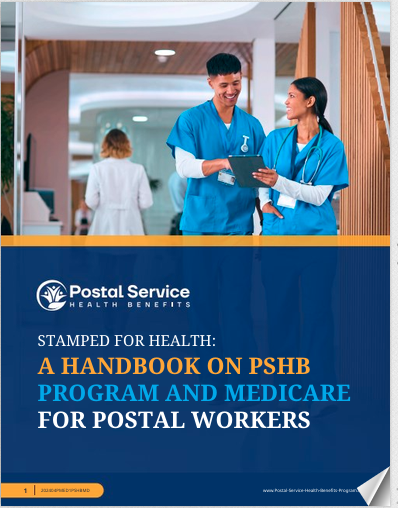Key Takeaways
- USPS workers should be aware of the new PSHB (Postal Service Health Benefits) plans that will replace FEHB (Federal Employees Health Benefits) for postal employees and retirees starting January 2025.
- Understanding eligibility requirements, key dates, and plan options is crucial to ensure USPS workers and retirees make informed decisions about their health coverage.
Getting Ready for PSHB Plan Selection: What USPS Workers Need to Know
Starting January 2025, Postal Service Health Benefits (PSHB) will officially replace the Federal Employees Health Benefits (FEHB) for United States Postal Service (USPS) workers and retirees. This significant change is part of the Postal Service Reform Act of 2022, a law designed to address the financial sustainability of the USPS while ensuring its employees have access to comprehensive health coverage. As this transition approaches, it’s crucial for USPS employees and retirees to prepare for the new plan options. Here’s what you need to know about the upcoming PSHB plan selection.
Why Is the Transition to PSHB Happening?
The transition from FEHB to PSHB is driven by legislative reforms aimed at addressing the long-term financial challenges of the USPS. The Postal Service Reform Act of 2022 was signed into law by President Joe Biden on April 6, 2022. This law mandates the creation of a new PSHB program, specifically designed for postal workers and retirees. One of the primary goals of this transition is to align the health benefits of USPS employees with their unique needs while helping the agency reduce its healthcare liabilities.
Under the new law, the PSHB program will operate separately from the FEHB program, though it will be administered by the Office of Personnel Management (OPM), which also oversees the FEHB. This separation allows the USPS to tailor health benefits to its workforce while still leveraging the expertise and infrastructure of the OPM.
Who Will Be Affected by the PSHB Transition?
The PSHB program will cover all current and retired USPS employees, as well as their eligible family members. This includes individuals who are currently enrolled in FEHB as USPS employees or retirees. However, there are important considerations regarding eligibility and coverage options under PSHB.
Eligibility Requirements:
- Current USPS Employees: All current employees of the USPS who are enrolled in FEHB will automatically be eligible for PSHB. This transition will not require any action on their part to maintain their health benefits, but they will need to select from the new PSHB plan options during the open season.
- Retirees: Retired USPS employees currently enrolled in FEHB will also transition to PSHB. However, Medicare-eligible retirees must enroll in Medicare Part B to maintain their PSHB coverage.
- Family Members: Eligible family members, including spouses and dependent children, will be covered under PSHB. It is important to review the specific rules regarding family member eligibility, as these may differ slightly from the current FEHB guidelines.
Key Dates for the PSHB Transition
Understanding the key dates related to the PSHB transition is critical for all USPS employees and retirees. Missing important deadlines could result in gaps in coverage or loss of benefits. Here are the key dates to keep in mind:
- January 2024: OPM will release detailed information about the PSHB plan options available to USPS employees and retirees. This information will include specifics about premiums, coverage levels, and provider networks.
- November 2024 – December 2024: The open season for PSHB plan selection will occur during this period. This is the time when USPS employees and retirees can review the available plans and make their selections for coverage starting in 2025. It is important to review all plan details carefully to choose the option that best meets your healthcare needs.
- January 1, 2025: The new PSHB coverage will officially begin. FEHB coverage for USPS employees and retirees will end on December 31, 2024, making the PSHB coverage effective the following day.
What to Consider When Selecting a PSHB Plan
Selecting the right PSHB plan is a crucial decision that can have significant implications for your healthcare coverage and out-of-pocket costs. Here are some key factors to consider when making your decision:
1. Coverage Needs: Consider your current health status and any anticipated healthcare needs for the coming year. If you have ongoing medical conditions or expect to need specific services, make sure the plan you choose offers comprehensive coverage in those areas.
2. Provider Networks: Check whether your preferred healthcare providers, including doctors, specialists, and hospitals, are included in the plan’s network. Switching plans might require changing providers, so this is an important consideration.
3. Prescription Drug Coverage: Review the plan’s formulary (list of covered drugs) to ensure that any medications you take regularly are covered. Also, check the cost-sharing requirements for prescription drugs, as these can vary between plans.
4. Premiums and Out-of-Pocket Costs: While premiums are an important consideration, don’t forget to review other out-of-pocket costs such as deductibles, copayments, and coinsurance. These costs can add up, especially if you require frequent medical care.
5. Medicare Coordination: For Medicare-eligible retirees, it is essential to understand how the PSHB plan coordinates with Medicare. Ensure that you are aware of any requirements, such as enrolling in Medicare Part B, and how your chosen PSHB plan will work alongside Medicare to provide comprehensive coverage.
How Will PSHB Affect Retirees?
The transition to PSHB is particularly important for retirees, as it may impact their current coverage arrangements. Here are some key points for retirees to consider:
Medicare Integration: Retirees who are eligible for Medicare will need to enroll in Medicare Part B to maintain their PSHB coverage. This requirement is a significant change for some retirees who may not currently be enrolled in Part B. The PSHB plans are designed to work alongside Medicare, so failing to enroll in Part B could result in higher out-of-pocket costs or loss of coverage.
Cost Considerations: While PSHB is expected to offer comparable coverage to FEHB, retirees should carefully review the costs associated with the new plans. This includes premiums, cost-sharing requirements, and any additional expenses that may arise from Medicare integration.
Plan Selection: Retirees should take the time to compare the available PSHB plans during the open season. It’s important to consider not only the costs but also the benefits, provider networks, and how well the plan meets their healthcare needs in retirement.
What Happens If You Don’t Select a PSHB Plan?
USPS employees and retirees who fail to select a PSHB plan during the open season may be automatically enrolled in a default plan. However, relying on automatic enrollment may not result in the best coverage for your needs. It is strongly recommended that all eligible individuals actively participate in the plan selection process to ensure they choose the plan that best fits their healthcare needs and financial situation.
Failing to enroll in Medicare Part B if you are eligible may result in higher out-of-pocket costs or the loss of PSHB coverage altogether. Therefore, it is essential to be proactive and make informed decisions during the transition period.
Preparing for the PSHB Transition
To ensure a smooth transition to PSHB, USPS employees and retirees should take the following steps:
Stay Informed: Keep an eye out for official communications from the USPS and OPM regarding the PSHB transition. These communications will provide important details about plan options, eligibility, and key dates.
Review Your Current Coverage: Take the time to review your current FEHB coverage and identify any gaps or areas for improvement. This will help you make a more informed decision when selecting a PSHB plan.
Consult with Licensed Insurance Agents: If you have questions or concerns about the transition, consider reaching out to a licensed insurance agent who can provide guidance and help you navigate the plan selection process.
Prepare for Medicare Enrollment: If you are a retiree eligible for Medicare, ensure that you are enrolled in Medicare Part B before the PSHB transition begins. This will help you avoid any disruptions in coverage and minimize your out-of-pocket costs.
Participate in Open Season: Actively participate in the open season to select your PSHB plan. Don’t rely on automatic enrollment, as it may not result in the best coverage for your needs.
Navigating Your Health Coverage in 2025
As January 2025 approaches, USPS employees and retirees must be prepared for the shift to PSHB. This new program represents a significant change, but with careful planning and informed decision-making, you can ensure that you and your family have the health coverage you need. Stay informed, review your options carefully, and don’t hesitate to seek guidance if you need it. The PSHB transition is an important opportunity to reassess your health coverage and make choices that best support your health and financial well-being.
Contact Information:
Email: [email protected]
Phone: 7045556789






